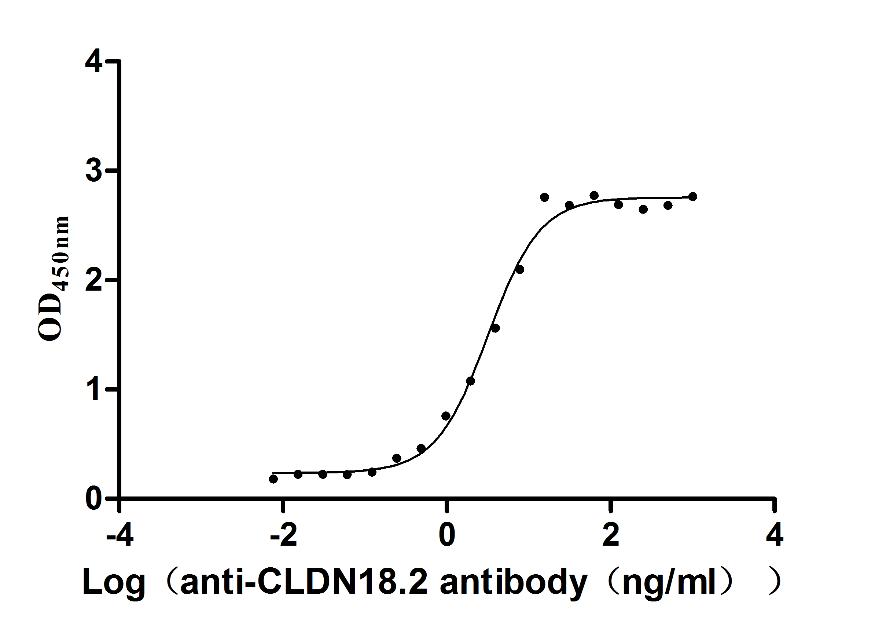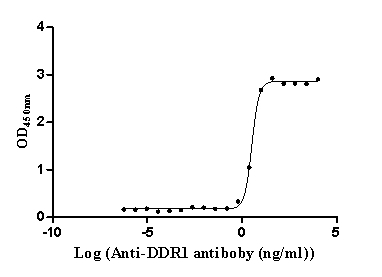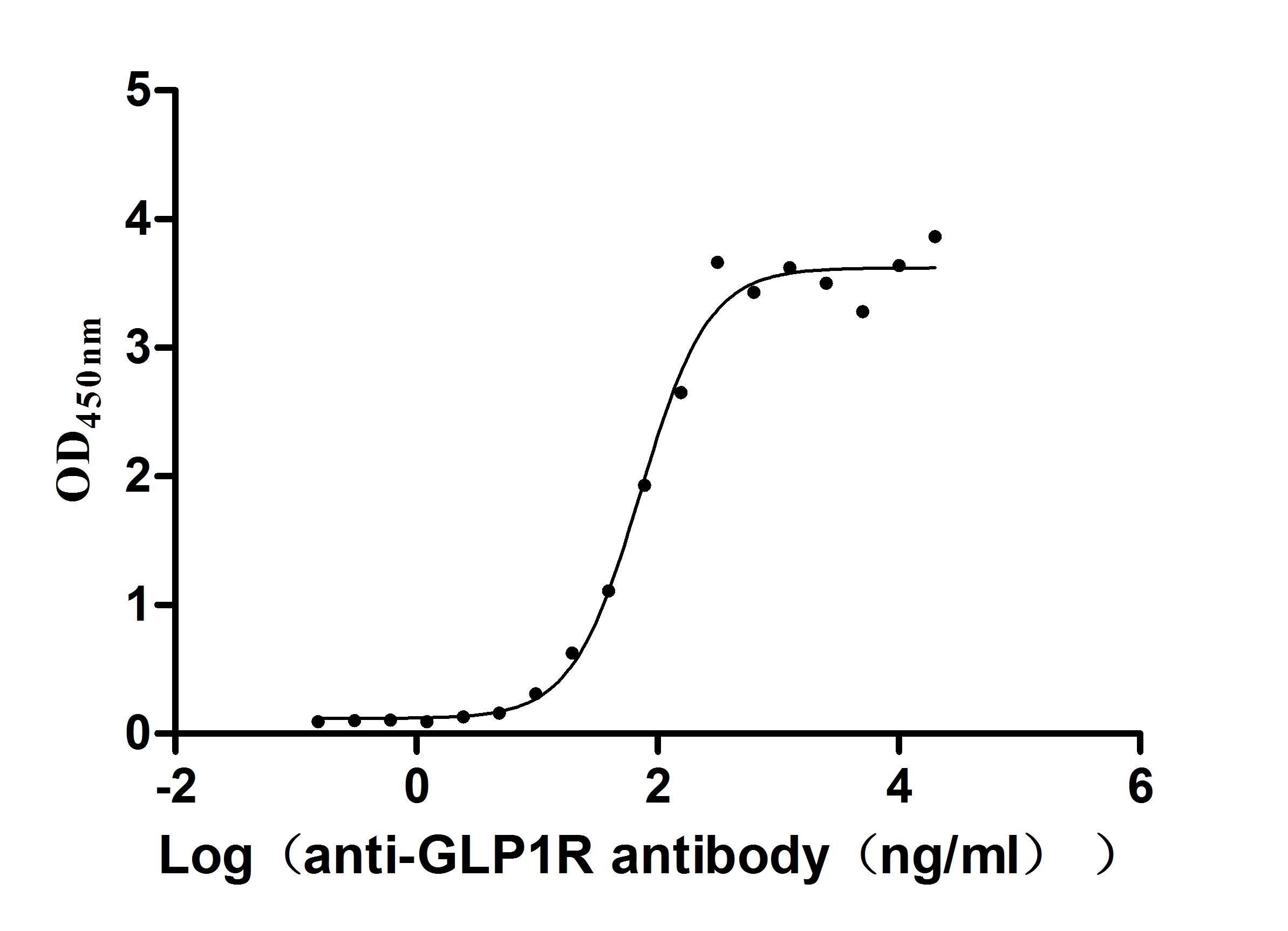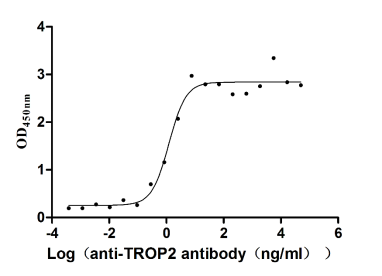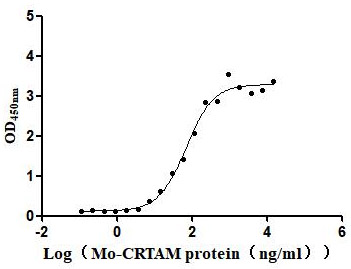Recombinant Human Chloride channel protein 2 (CLCN2), partial
-
中文名称:Recombinant Human Chloride channel protein 2(CLCN2) ,partial
-
货号:CSB-YP005481HU
-
规格:
-
来源:Yeast
-
其他:
-
中文名称:Recombinant Human Chloride channel protein 2(CLCN2) ,partial
-
货号:CSB-EP005481HU
-
规格:
-
来源:E.coli
-
其他:
-
中文名称:Recombinant Human Chloride channel protein 2(CLCN2) ,partial
-
货号:CSB-EP005481HU-B
-
规格:
-
来源:E.coli
-
共轭:Avi-tag Biotinylated
E. coli biotin ligase (BirA) is highly specific in covalently attaching biotin to the 15 amino acid AviTag peptide. This recombinant protein was biotinylated in vivo by AviTag-BirA technology, which method is BriA catalyzes amide linkage between the biotin and the specific lysine of the AviTag.
-
其他:
-
中文名称:Recombinant Human Chloride channel protein 2(CLCN2) ,partial
-
货号:CSB-BP005481HU
-
规格:
-
来源:Baculovirus
-
其他:
-
中文名称:Recombinant Human Chloride channel protein 2(CLCN2) ,partial
-
货号:CSB-MP005481HU
-
规格:
-
来源:Mammalian cell
-
其他:
产品详情
-
纯度:>85% (SDS-PAGE)
-
基因名:CLCN2
-
Uniprot No.:
-
别名:Chloride Channel 2; Chloride channel protein 2; Chloride channel; voltage sensitive 2; CIC 2; CIC2; ClC-2; CLC2; Clcn2; CLCN2_HUMAN; ECA2; ECA3; EG13; EGI11; EGMA; EJM6; EJM8; PKA-activated chloride channel
-
种属:Homo sapiens (Human)
-
蛋白长度:Partial
-
蛋白标签:Tag type will be determined during the manufacturing process.
The tag type will be determined during production process. If you have specified tag type, please tell us and we will develop the specified tag preferentially. -
产品提供形式:Lyophilized powder
Note: We will preferentially ship the format that we have in stock, however, if you have any special requirement for the format, please remark your requirement when placing the order, we will prepare according to your demand. -
复溶:We recommend that this vial be briefly centrifuged prior to opening to bring the contents to the bottom. Please reconstitute protein in deionized sterile water to a concentration of 0.1-1.0 mg/mL.We recommend to add 5-50% of glycerol (final concentration) and aliquot for long-term storage at -20℃/-80℃. Our default final concentration of glycerol is 50%. Customers could use it as reference.
-
储存条件:Store at -20°C/-80°C upon receipt, aliquoting is necessary for mutiple use. Avoid repeated freeze-thaw cycles.
-
保质期:The shelf life is related to many factors, storage state, buffer ingredients, storage temperature and the stability of the protein itself.
Generally, the shelf life of liquid form is 6 months at -20°C/-80°C. The shelf life of lyophilized form is 12 months at -20°C/-80°C. -
货期:Delivery time may differ from different purchasing way or location, please kindly consult your local distributors for specific delivery time.Note: All of our proteins are default shipped with normal blue ice packs, if you request to ship with dry ice, please communicate with us in advance and extra fees will be charged.
-
注意事项:Repeated freezing and thawing is not recommended. Store working aliquots at 4°C for up to one week.
-
Datasheet :Please contact us to get it.
相关产品
靶点详情
-
功能:Voltage-gated chloride channel. Chloride channels have several functions including the regulation of cell volume, membrane potential stabilization, signal transduction and transepithelial transport. Involved in the regulation of aldosterone production. The opening of CLCN2 channels at hyperpolarized membrane potentials in the glomerulosa causes cell membrane depolarization, activation of voltage-gated Ca2+ channels and increased expression of aldosterone synthase, the rate-limiting enzyme for aldosterone biosynthesis.
-
基因功能参考文献:
- The inhibitory effects of ClC-2 knockout on HBVSMC proliferation and motility were associated with inactivation of the Wnt/beta-catenin signaling pathway, as evidenced by inhibition of beta-catenin phosphorylation and nuclear translocation, and decrease of GSK-3beta phosphorylation and survivin and cyclin D1 expression. PMID: 29988306
- Leukoencephalopathy-causing CLCN2 mutations impair chloride channel gating and trafficking. PMID: 28905383
- ClC-2 mRNA level was significantly increased in patients with non-alcoholic steatohepatitis, which positively correlated with the plasma levels of alanine transaminase (ALT), aspartate transaminase (AST) and insulin. PMID: 29550812
- The findings show that RGET691 of human ClC-2 (possible binding site) plays an important functional role in fatty acid activation of human ClC-2. PMID: 28424169
- Hyperpolarization activates CLC-2 mainly by driving intracellular anions into the channel pores. PMID: 26666914
- The extracellular domain of GlialCAM is necessary for cell junction targeting and for mediating interactions with itself or with MLC1 and ClC-2. PMID: 26033718
- both ubiquitous (AP-1A) and epithelium-specific (AP-1B) forms of the tetrameric clathrin adaptor AP-1 are capable of carrying out basolateral sorting of ClC-2. PMID: 25739457
- SPAK and OSR1 are powerful negative regulators of the cell volume regulatory Cl- channel ClC-2 PMID: 25323061
- Correlation between CLC-2 gene expression and the cytoskeleton in human trabecular meshwork cells. PMID: 23934342
- Our observations substantiate the concept that ClC-2 is involved in brain ion and water homoeostasis PMID: 23707145
- JAK2 down-regulates ClC-2 activity and thus counteracts Cl(-) exit, an effect which may impact on cell volume regulation PMID: 22613974
- This study demonistrated that the first auxiliary subunit of ClC-2 and suggests that ClC-2 may play a role in the pathology of MLC disease. PMID: 22405205
- ClC-2 plays an important role in the modulation of tight junctions by influencing caveolar trafficking of tight junction protein occludin. PMID: 21956164
- Sequence analysis of CLCN2 at genomic DNA and cDNA levels in 18 megalencephalic leukoencephalopathy MLC1 mutations revealed some nucleotide changes, but they were predicted to be nonpathogenic. PMID: 20187760
- found significant expression of ClC-2 at the apex of ciliated cells in both rat and human airways PMID: 11880269
- a functional interaction between the ClC-2 chloride channel and the retrograde motor dynein complex. PMID: 12601004
- ClC-2 and ClC-3 channels are specifically upregulated in glioma membranes and endow glioma cells with an enhanced ability to transport Chloride PMID: 12843258
- activation of hClC-2 is differentially regulated by PKA at two sites PMID: 15010473
- Functional evaluation of mutated channels associated with idiopathic generalized epilepsies PMID: 15252188
- activation of host ClC-2 channels participates in the altered permeability of Plasmodium-infected erythrocytes but is not required for intraerythrocytic parasite survival PMID: 15272009
- These results indicate that ClC-2 may not be a Cl- -transporting protein for gastric acid secretion in parietal cells. PMID: 15388342
- These data suggest that interferon-gamma activates ClC-2 channel activity in lung epithelial cells via mRNA stabilization. PMID: 15464978
- The authors conclude that CLCN2 mutations may be a rare cause of familial epilepsy. Further studies are needed to test if polymorphisms in this gene are associated with epilepsy. PMID: 15505175
- CLC-2 is not a key modifier gene of Cystic fibrosis lung disease phenotype. PMID: 15507145
- CLCN2 is related to idiopathic generalized epilepsy. PMID: 15508929
- association of Hsp90 with ClC-2 results in greater channel activity due to increased cell surface channel expression, facilitation of channel opening, and enhanced channel sensitivity to intracellular [Cl-] PMID: 16049054
- This suggests that slow and fast gating in ClC-2 are coupled, perhaps with slow gating contributing to the operation of the pore E207 as a protopore gate. PMID: 16469788
- mutations in the CLCN2 gene are only a rare cause of idiopathic generalized epilepsy PMID: 16932951
- CLCN2 may be a susceptibility locus in a subset of cases of childhood absence epilepsy PMID: 17580110
- Africans' gene pool comprises CLCN2 gene variants in the N-terminus, the C-terminus or the pore domain that affect surface expression and voltage- or cell-swelling-stimulated channel gating PMID: 17762171
- CLC-2 is upregulated in ethmoid mucosa and may affect the development of chronic rhinosinusitis without nasal polyps. PMID: 17882904
- propose that the function of the ClC-2 carboxy-terminus is to slow down the time course of channel activation in order to stabilize neuronal excitability PMID: 18801843
- Finding predicts a loss of function that may contribute to intracellular chloride accumulation or neuronal hyperexcitability. PMID: 19191339
- PIKfyve is a potent stimulator of ClC-2-activity and contributes to SGK1-dependent regulation of ClC-2. PMID: 19232516
- GaTx2 specifically inhibits ClC-2 channels, showing no inhibitory effect on a battery of other major classes of chloride channels and voltage-gated potassium channels. GaTx2 is the first peptide toxin inhibitor of any ClC protein. PMID: 19574231
- CLCN2 variants in indiopathic generalized epilepsy are reported. PMID: 19710712
- ClC-2 requires residing in beta-cyclodextrin sensitive plasma membrane clusters with other molecules in order to remain active. Regulation of ClC-2 trafficking to (endocytic pathway) and within the membrane could be a means of modulating its activity. PMID: 19711355
- two novel CLCN2 missense mutations, p.Arg235Gln and p.Arg577Gln, accelerating chloride channel deactivation are associated with idiopathic generalized epilepsy. PMID: 19191339
显示更多
收起更多
-
相关疾病:Epilepsy, idiopathic generalized 11 (EIG11); Juvenile absence epilepsy 2 (JAE2); Juvenile myoclonic epilepsy 8 (EJM8); Leukoencephalopathy with ataxia (LKPAT)
-
亚细胞定位:Cell membrane; Multi-pass membrane protein.
-
蛋白家族:Chloride channel (TC 2.A.49) family, ClC-2/CLCN2 subfamily
-
组织特异性:Ubiquitously expressed. Moderately expressed in aortic and coronary vascular smooth muscle cells and expressed at a low level in aortic endothelial cells. Expressed in the adrenal gland, predominantly in the zona glomerulosa.
-
数据库链接:
Most popular with customers
-
Recombinant Human Tumor necrosis factor ligand superfamily member 18 (TNFSF18), partial (Active)
Express system: Mammalian cell
Species: Homo sapiens (Human)
-
Recombinant Rabbit Tissue factor pathway inhibitor (TFPI) (Active)
Express system: Mammalian cell
Species: Oryctolagus cuniculus (Rabbit)
-
Recombinant Human Angiopoietin-2 (ANGPT2) (Active)
Express system: Mammalian cell
Species: Homo sapiens (Human)
-
Recombinant Macaca fascicularis Claudin 18.2 (CLDN18.2)-VLPs (Active)
Express system: Mammalian cell
Species: Macaca fascicularis (Crab-eating macaque) (Cynomolgus monkey)
-
Recombinant Human Epithelial discoidin domain-containing receptor 1 (DDR1), partial (Active)
Express system: Mammalian cell
Species: Homo sapiens (Human)
-
Recombinant Human Glucagon-like peptide 1 receptor (GLP1R), partial (Active)
Express system: Mammalian cell
Species: Homo sapiens (Human)
-
Recombinant Human Tumor-associated calcium signal transducer 2 (TACSTD2), partial (Active)
Express system: Mammalian cell
Species: Homo sapiens (Human)
-
Recombinant Mouse Cell adhesion molecule 1 (Cadm1), partial (Active)
Express system: Mammalian cell
Species: Mus musculus (Mouse)


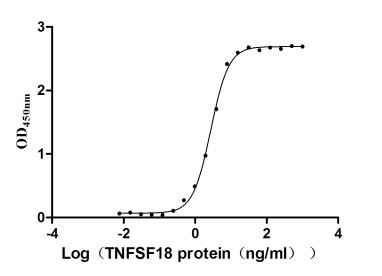
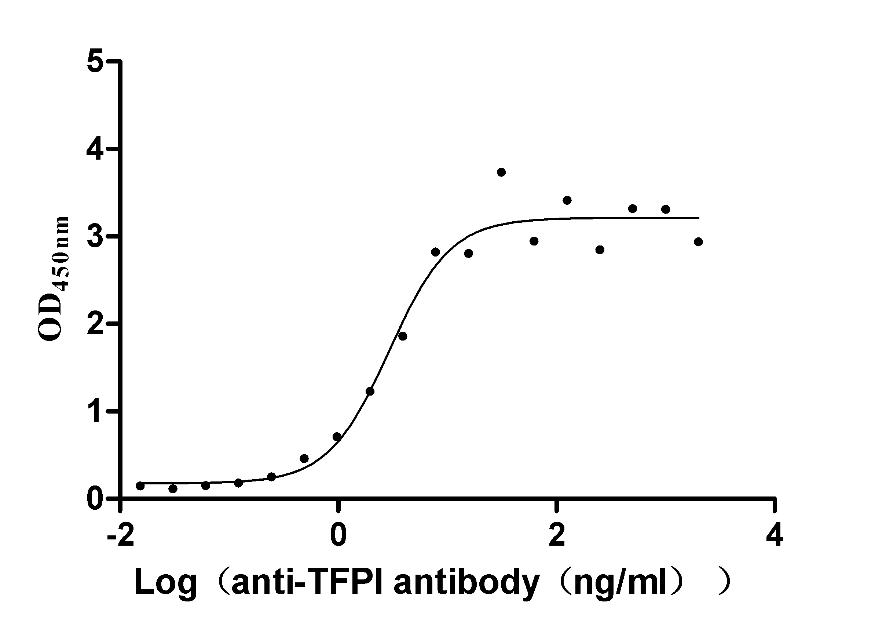
-AC1.jpg)
